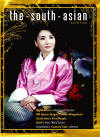|
|
the-south-asian.com August 2007 |
|
|||
|
Famous
Bazaars
Ratan Tata Remaining
articles
Books Between
Heaven and Hell
|
|
||||
|
Page
2 of 3
All photographs and text copyright: The South Asian Media & Publishing
The area known as Chandni Chowk is the main bazaar that stretches from Jain temple at Red Fort end to the Fatehpuri mosque at the other end, together with its labyrinth of by-lanes on either side. The shops on the main street sell a variety of goods ranging from footwear, crockery, computer stationery to wedding outfits for men, women and children – at prices considerably less than that of shops in South Delhi. Imitation designer lehngas that sell for over Rs 100,000 in the sanitized elegance of South Delhi boutiques, can be bought for one-tenth the price here. Vendors sitting in the veranda are more experimental and original with their wares – kajal (kohl), daatan (neem twigs to clean teeth) are the two most popular items, followed by baskets of fresh flowers for offering in temples, mosque and gurudwara. It is the by-lanes specialising in specific trades that give Chandni Chowk its unique character: Dariba in silverware, Khari Baoli in spices, Kinari Bazaar in wedding essentials, Paranthe wali gali in paranthas (stuffed pancakes), the list being endless. The street food of Chandni Chowk, always of high quality from the known sources, has moved with the times. Prepared more hygienically, it is served on disposable plates – with great love and a huge personal touch. That is the big difference!
Architecturally, the place was once renowned for its havelis (mansions) that spelled grandeur and, at times, decadence. Begum Sumroo’s palace had gardens that extended up to the main Chandni Chowk. The rich and the influential had their abodes facing the main street. The by-lanes had merchants and the middle classes living there. The havelis have all but vanished today – some are unkempt, others have been locked up because of family feuds. Begum Sumroo’s palace, which once resounded with music, laughter, poetry and conversation, is hidden behind the nervous wreck of an electrical goods market, falling apart and precariously balanced on what seems to be a tectonic divide – ready to crash. Lala Chunna Mal’s haveli, a 126 room mansion built in 1848, and some of its rooms still lived-in by Lala Ji’s descendents, has been declared a Heritage building and yet has a public toilet, an electric transformer and a pumping station right next to its entrance. Amidst this architectural mayhem, and chaotic flow of trade traffic, life still moves on. The rich and the poor live in the same neighbourhood, the bridal market flourishes, the street-food draws loyal food junkies by the thousands, the spice market, often described as ‘the best in the world for its quality’, keeps the curries flavoured – and the 150 year old ‘Attar’ or perfume shop in Dariba sells not just the extract of rose or motia but also the essence of Chandni Chowk – in its little glass vials!
|
|||||
|
Copyright © 2000 - 2007 [the-south-asian.com]. Intellectual Property. All rights reserved. |
|||||







